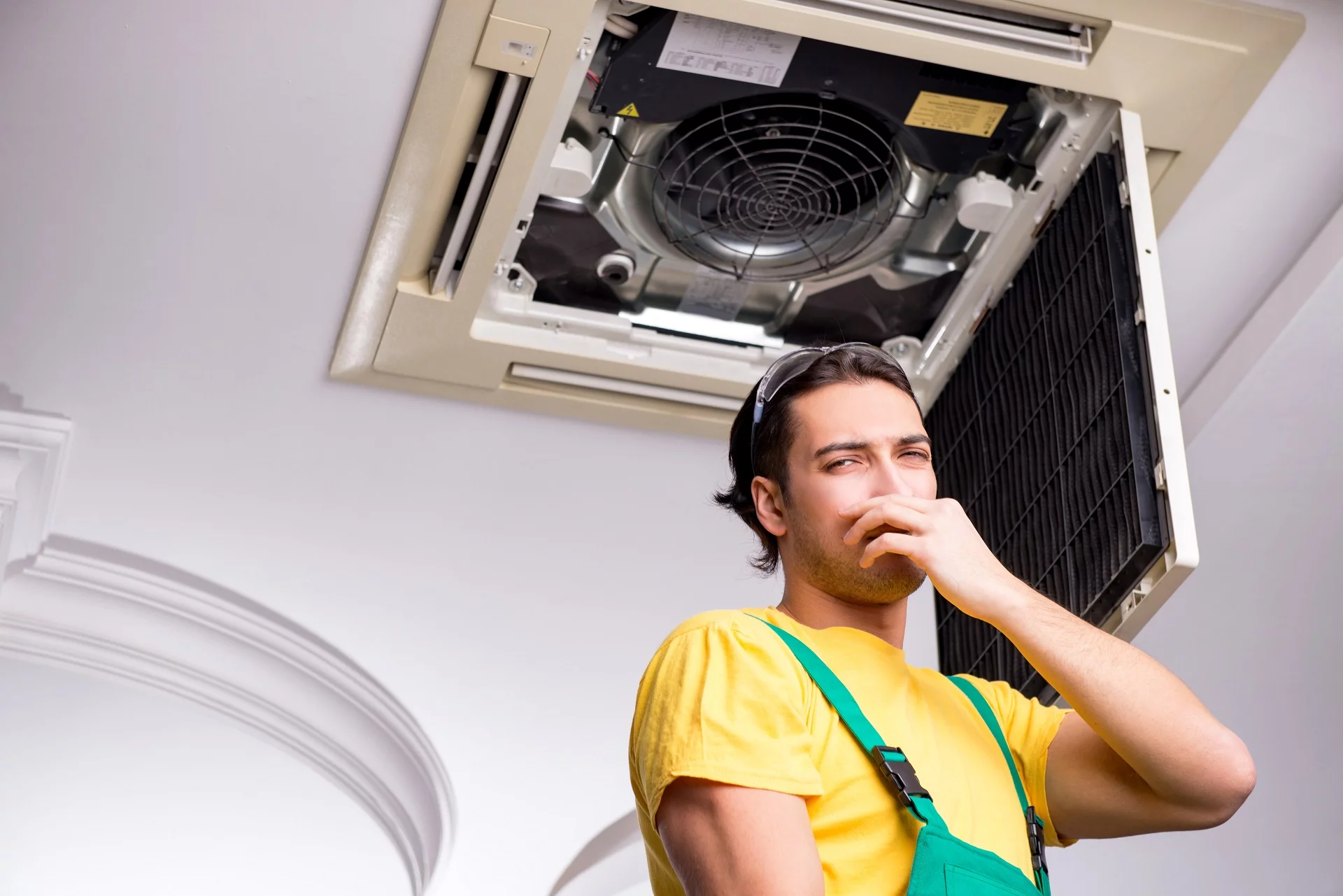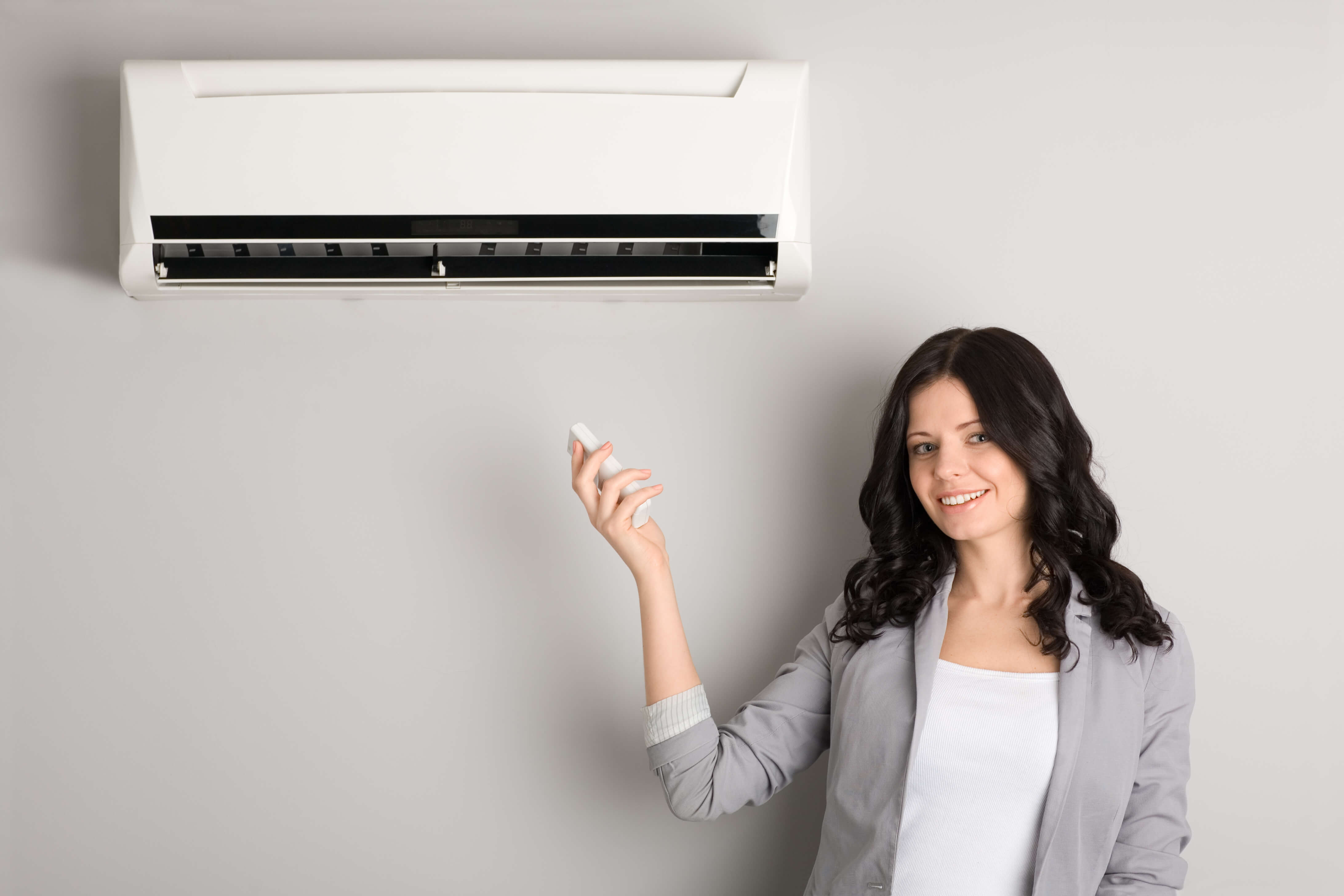Home>Home Maintenance>How To Turn Off An Air Conditioner


Home Maintenance
How To Turn Off An Air Conditioner
Modified: March 7, 2024
Looking for home maintenance tips? Learn how to turn off an air conditioner properly and ensure efficient energy usage. Save on bills and increase comfort!
(Many of the links in this article redirect to a specific reviewed product. Your purchase of these products through affiliate links helps to generate commission for Storables.com, at no extra cost. Learn more)
Introduction
Welcome to our comprehensive guide on how to turn off an air conditioner. Knowing how to properly shut down your air conditioning unit is crucial for maintenance and energy-saving. Whether you’re looking to perform routine maintenance or temporarily power down your system, this step-by-step tutorial will provide you with all the necessary information.
An air conditioner is a complex system that requires careful handling to ensure its longevity and efficiency. By following the correct process, you can safeguard your unit from unnecessary wear and tear and potentially reduce your energy consumption.
In this article, we will guide you through the process of turning off an air conditioner, highlighting the essential steps for a smooth and safe shutdown. From locating the unit to shutting off the power controls and even unplugging the unit if necessary, we will cover all the necessary steps to properly turn off your air conditioner.
So, let’s dive in and explore how to effectively turn off your air conditioner to ensure optimal performance and longevity.
Key Takeaways:
- Properly turning off your air conditioner is crucial for its longevity and energy-saving. Locate the unit, switch off the power controls, and consider unplugging for added safety and energy conservation.
- Turning off an air conditioner involves locating the unit, switching off the power controls, and optionally unplugging it. This helps maintain the unit, saves energy, and ensures safety.
Read more: How To Turn Off Wi-Fi On An Air Conditioner
Step 1: Locate the Air Conditioner Unit
The first step in turning off your air conditioner is to locate the unit itself. In most cases, the air conditioner will be installed outside the house, but there are variations depending on the type of system you have.
If you have a central air conditioning system, the unit will typically be found outside near the foundation of your house. Look for a large metal box with vents on the sides. It may be situated on a concrete pad or mounted on the side of your house.
For window air conditioners, the unit will be mounted in the window frame or through a hole cut into the wall. In this case, the unit will be easily visible and accessible from inside your home.
Once you have located the air conditioner unit, make sure there is adequate space around it to safely maneuver. Clear any debris, such as leaves or branches, that may have accumulated around the unit to ensure proper airflow.
Locating the air conditioner unit is an important first step as it allows for easy access to the necessary components for turning off the system.
Step 2: Find the Power Controls
After locating the air conditioner unit, the next step is to find the power controls. These controls may vary depending on the type of air conditioning system you have.
For a central air conditioning system, the power controls are typically located near the unit itself. Look for an electrical disconnect box mounted on the wall or located on the unit itself. This box will house the power control switches and fuses.
If you have a window air conditioner, the power controls are usually located on the unit itself. Look for a control panel on the front or side of the unit. This panel will contain buttons or switches to control the power and settings.
Once you have located the power controls, it’s important to familiarize yourself with the different switches and buttons. Look for the main power switch or circuit breaker, as this will be used to turn off the system. Take note of any other controls or settings that may also need to be adjusted or turned off.
It’s essential to exercise caution when handling electrical components. If you are unsure about which switches or controls to use, consult the user manual or contact a professional for guidance.
Now that you have found the power controls, you are ready to move on to the next step of turning off your air conditioner.
Step 3: Turn Off the Circuit Breaker
Once you have located the power controls for your air conditioner, it’s time to turn off the circuit breaker. The circuit breaker is a safety device that protects your air conditioner from electrical damage.
To find the circuit breaker for your air conditioner, locate the electrical panel in your home. This panel is usually located in the basement, utility room, or garage. It contains multiple circuit breakers or fuses that control the electricity to different areas of your home.
Look for the circuit breaker that is labeled for the air conditioning unit. It may be labeled as “AC,” “A/C,” or “Air Conditioner.” If you’re unsure which breaker controls your air conditioner, refer to the electrical panel diagram or consult with a professional.
Once you have identified the correct circuit breaker, switch it to the “off” position. This will cut off the power supply to the air conditioner unit, ensuring that it is completely shut down.
Remember to handle the circuit breaker with caution and avoid touching any live electrical components. If you are unsure about how to safely operate the circuit breaker, it’s best to consult a qualified electrician.
By turning off the circuit breaker, you are taking a crucial step in properly shutting down your air conditioner and preventing any potential electrical issues.
To turn off an air conditioner, simply locate the power button or switch on the unit or remote control and press it to turn the system off. If you can’t find the power button, you can also unplug the unit from the electrical outlet.
Step 4: Switch Off the Air Conditioner Unit
After turning off the circuit breaker, the next step is to switch off the air conditioner unit itself. This will ensure that all electrical power is completely cut off, preventing any potential accidents or damage when performing maintenance or repairs.
For a central air conditioning system, locate the electrical disconnect box that you identified in Step 2. Open the box by removing the cover, which may require a screwdriver or a simple latch mechanism. Inside the box, you will find the main power switch or switches that supply electricity to the air conditioner unit.
Flip the switch or switches to the “off” position. This will disconnect the power from the unit, effectively shutting it down. Take note of any additional switches or controls in the disconnect box, as they may need to be turned off as well.
If you have a window air conditioner, look for the power switch or button on the control panel. This is typically labeled as “Power” or represented by a symbol indicating the power supply. Press or switch the button to the “off” position to cut off the power to the unit.
Once you have switched off the air conditioner unit, it is advisable to wait a few minutes before proceeding. This allows any residual electrical charge to dissipate, ensuring that it is safe to handle the unit or perform any maintenance tasks.
By switching off the air conditioner unit, you are taking the necessary step to fully disconnect the electrical power and prevent any potential accidents or damage.
Step 5: Unplug the Air Conditioner (Optional)
In some cases, you may choose to go an extra step and unplug the air conditioner from the power source. This step is optional but can provide an added level of safety and energy conservation.
If you decide to unplug the air conditioner, begin by following the previous steps to locate the power controls and switch off the unit. Once the unit is switched off, locate the power plug that connects the air conditioner to the electrical outlet.
Take care when handling the power plug and make sure your hands are dry to avoid electrical shock. Firmly grip the plug and remove it from the electrical outlet. Ensure that you are pulling directly on the plug and avoid tugging on the cord, as this may damage the cord or the electrical socket.
By unplugging the air conditioner, you completely disconnect it from the power source, eliminating any possibility of accidental power flow or electrical hazards.
Keep in mind that if you choose to unplug the air conditioner, you will need to plug it back in when you are ready to use it again. This step may be more suitable for long periods of inactivity or for those looking to conserve energy during times when the air conditioning is not needed.
Remember, safety should be your top priority when handling any electrical equipment. If you are uncomfortable or unsure about handling the power plug, it is always best to seek assistance from a qualified professional.
By following these steps to unplug the air conditioner, you are taking an optional but proactive approach to ensure the unit is safely disconnected from the power source.
Conclusion
Turning off an air conditioner properly is essential for maintenance, energy-saving, and safety. By following the steps outlined in this comprehensive guide, you can ensure that your air conditioner is shut down correctly and protected from unnecessary wear and tear.
Start by locating the air conditioner unit, whether it’s a central system or a window unit. Clear any debris around the unit for proper airflow. Next, find the power controls, which may be located near the unit itself or on a control panel for window units.
After identifying the power controls, turn off the circuit breaker dedicated to the air conditioning unit. This will cut off the electrical supply and prevent any potential electrical issues.
Following that, switch off the air conditioner unit itself using the main power switch in the disconnect box for central systems or the power button on the control panel for window units. This step ensures that all electrical power is completely cut off.
Lastly, you have the option to unplug the air conditioner from the power source. This step provides additional safety and energy conservation during extended periods of inactivity.
Remember to exercise caution when handling electrical components and always prioritize your safety. If you are uncertain about any of the steps or feel uncomfortable performing them, it is best to consult a professional for assistance.
Properly turning off your air conditioner will not only help maintain its longevity and efficiency but also contribute to energy conservation and reduce your utility bills. By following these steps, you can ensure that your air conditioning unit is properly shut down and ready for future use.
Thank you for reading our guide on how to turn off an air conditioner. Stay cool, and take care!
Frequently Asked Questions about How To Turn Off An Air Conditioner
Was this page helpful?
At Storables.com, we guarantee accurate and reliable information. Our content, validated by Expert Board Contributors, is crafted following stringent Editorial Policies. We're committed to providing you with well-researched, expert-backed insights for all your informational needs.














